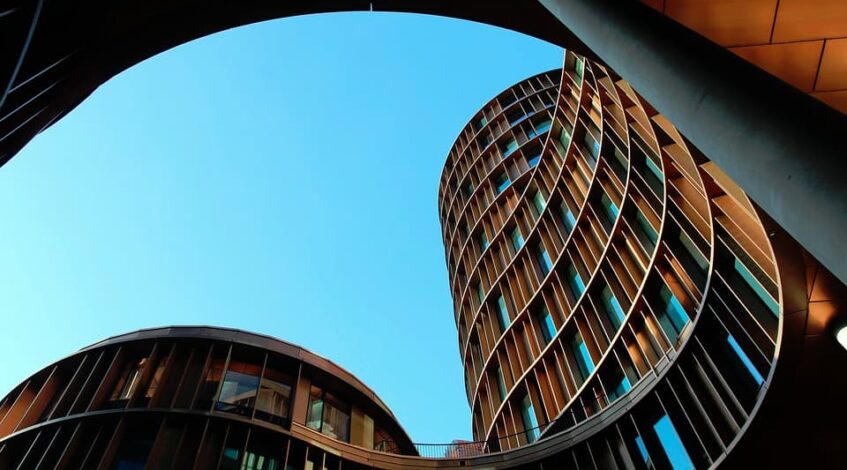The world of modern art has always been characterized by constant change and innovation, as artists seek to explore new ideas and techniques to express their creativity. The art world of 2023 is no exception, with a plethora of exciting trends that are gaining momentum and reshaping the landscape of contemporary art. In this article, we’ll dive into the top five modern art trends that are dominating the scene today, and how they’re revolutionizing the way we perceive and interact with art.
1. Virtual Reality (VR) and Augmented Reality (AR) Art Experiences
The integration of virtual reality (VR) and augmented reality (AR) technology into the art world has opened up entirely new possibilities for artistic expression and immersive experiences. These cutting-edge technologies are allowing artists to create unique, interactive pieces that blur the lines between the real and the virtual.
- VR Art Galleries: Art enthusiasts can now explore virtual galleries, immersing themselves in a 360-degree environment that showcases various art pieces without ever leaving their homes.
- AR Art Installations: AR technology is being used to create captivating, interactive installations that merge the physical and digital worlds, allowing viewers to engage with art in a more profound way.
2. Sustainable and Eco-Friendly Art
In an era of increasing environmental consciousness, artists are exploring sustainable and eco-friendly materials and processes to create their works. This trend highlights the importance of considering the environmental impact of art production, as well as raising awareness of environmental issues through artistic expression.
- Upcycled Materials: Many artists are repurposing waste materials, such as plastic bottles, textiles, and scrap metal, to create visually stunning and thought-provoking pieces.
- Eco-Friendly Art Supplies: The use of sustainable, non-toxic, and biodegradable materials, such as plant-based pigments, is becoming increasingly popular among artists who are committed to reducing their ecological footprint.
3. Art as a Platform for Social Change
The power of art to communicate, provoke thought, and inspire change is being harnessed by artists who are addressing pressing social issues through their work. By using their artistic talents to shed light on topics such as racial inequality, gender discrimination, and political unrest, these artists are contributing to important conversations and driving societal change.
- Activist Art: Art that explicitly addresses social, political, and environmental issues, often with the intention of sparking debate and inspiring action.
- Intersectional Art: Works that explore the complex interplay between multiple forms of oppression and identity, encouraging viewers to consider the interconnectedness of diverse experiences and struggles.
4. Digital Art and NFTs
The digital art movement has been revolutionized by the rise of Non-Fungible Tokens (NFTs), which provide a method for artists to authenticate, sell, and collect digital art in a secure and decentralized manner. The NFT craze has opened up new opportunities for artists working in digital media and has prompted a reevaluation of the value and potential of digital art in the broader art market.
- Crypto Art: Digital artworks that are bought, sold, and traded using blockchain technology, often in the form of NFTs.
- Generative Art: Computer-generated artworks that are created using algorithms and coding, offering a unique blend of art and technology that challenges traditional notions of authorship and creative control.
5. Inclusivity and Diversification in the Art World
As the art world becomes increasingly globalized, there has been a growing emphasis on inclusivity and diversification in terms of both artists and audiences. By showcasing the work of underrepresented artists and embracing a wider range of perspectives, the modern art landscape is becoming more accessible and enriching for all.
- Emerging Artists from Diverse Backgrounds: Galleries, museums, and collectors are increasingly seeking out and promoting the work of artists from diverse cultural, geographic, and socio-economic backgrounds, contributing to a more inclusive and multifaceted art scene.
- Inclusive Art Spaces: The creation of accessible and welcoming art spaces, such as community galleries and public art projects, is enabling a broader range of people to engage with and appreciate modern art.
As we’ve seen, the modern art world in 2023 is experiencing an exciting period of transformation and innovation, driven by the emergence of new technologies, a growing commitment to environmental and social responsibility, and a desire to foster greater inclusivity and diversity. These trends are not only reshaping the way we create and experience art but are also expanding our understanding of what art can be and the role it can play in our lives.
By embracing these trends, artists, curators, collectors, and art enthusiasts can play an active role in shaping the future of modern art, ensuring that it remains a dynamic and evolving field that continues to inspire, challenge, and delight for generations to come.
So, whether you’re an artist seeking to push the boundaries of your creative practice or an art lover eager to stay on the cutting edge of the latest trends, there has never been a more thrilling time to be involved in the world of modern art. From virtual and augmented reality experiences to the rise of NFTs and crypto art, the opportunities for exploration and innovation are virtually limitless.
Remember to keep an open mind, stay informed about the latest developments, and don’t be afraid to embrace the new and the unexpected. By doing so, you’ll be well-positioned to

